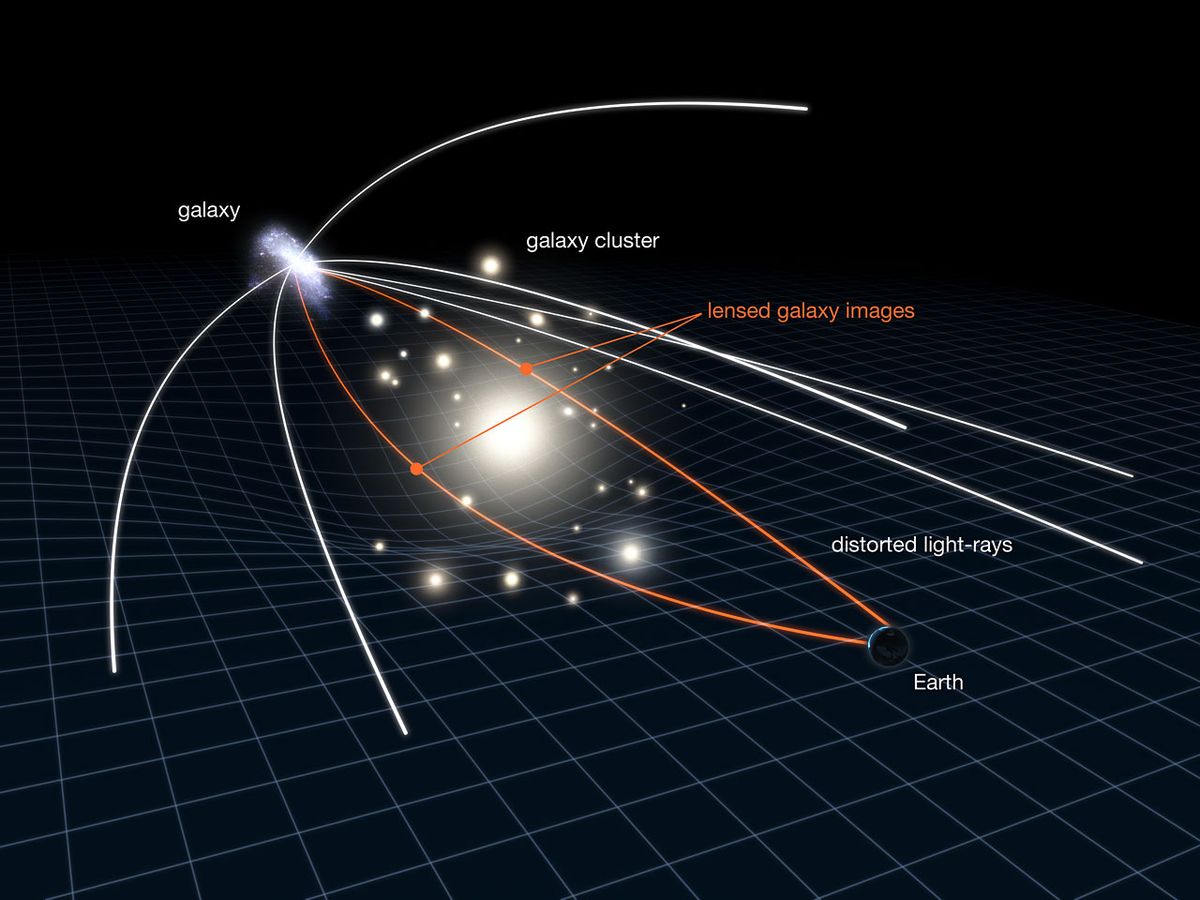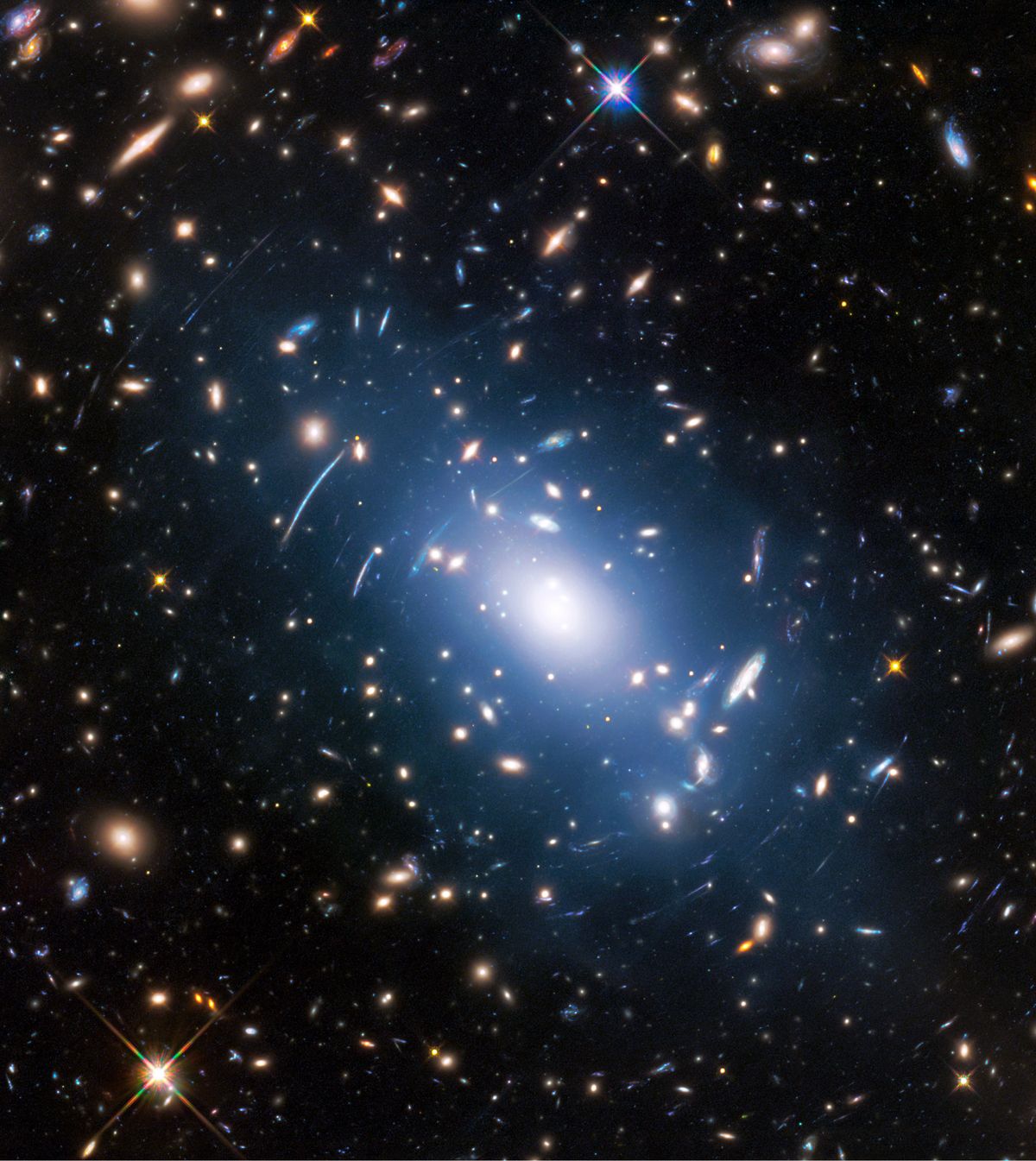Follow us on Google News (click on ☆)

Diagram of the gravitational lensing phenomenon.
Credit: NASA/ESA/L. Calçada
These galaxies, detected as part of the GLIMPSE program, mark a major milestone. Their light traveled for 13.6 billion years to reach us. Due to the expansion of the Universe, they are now located approximately 34 billion light-years away, setting a new potential distance record.
These galaxies are classified as "high redshift" or "high z" because of a phenomenon where light is stretched due to the expansion of the Universe. The higher the redshift, the older and farther the galaxy. These new candidates, with redshifts ranging between z=16 and z=18, surpass previous records.
To observe these extremely faint galaxies, researchers used a "gravitational lens." This phenomenon, predicted by Einstein, amplifies the light of distant galaxies through the bending of spacetime caused by massive galaxy clusters, such as the Abell S1063 cluster.
Despite these powerful tools, understanding these galaxies remains challenging. They are smaller and dimmer than those discovered previously. Scientists are now aiming to confirm their nature through spectral analyses, which could provide clues about their composition and formation.

The Abell S1063 cluster, used as a gravitational lens.
Credit: NASA/ESA
These discoveries could reshape our understanding of the early Universe. According to researchers, forming such bright galaxies in such a short time after the Big Bang would require particularly intense processes that remain poorly understood.
The data from the GLIMPSE project, obtained in just 150 hours of observation, highlight the extraordinary potential of the Webb telescope. However, looking even further back in time would require colossal efforts to detect even fainter and more challenging objects.
For now, if these galaxies are confirmed, they will help answer fundamental questions about the Universe's earliest moments. Researchers are confident that more major discoveries will enrich this program.